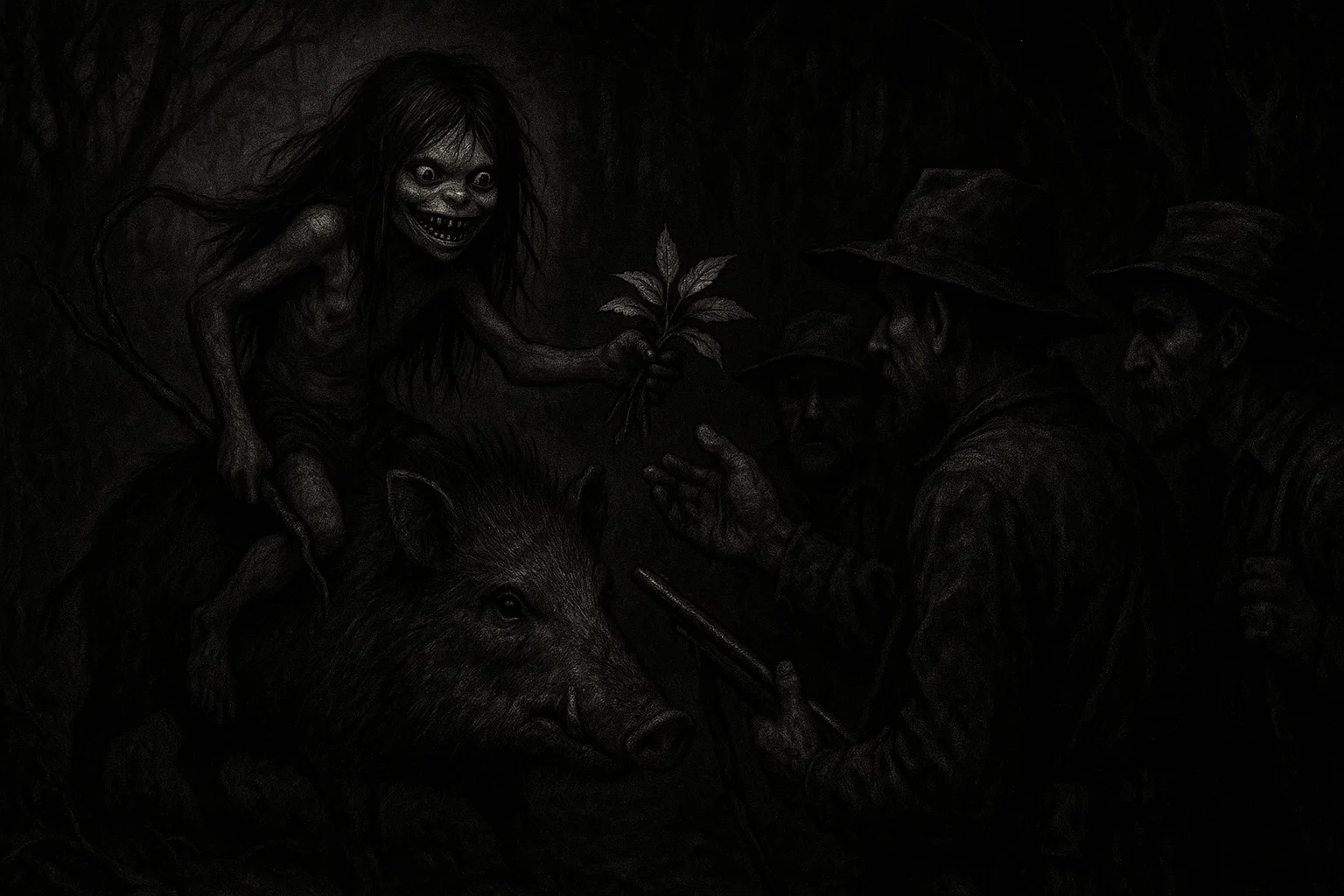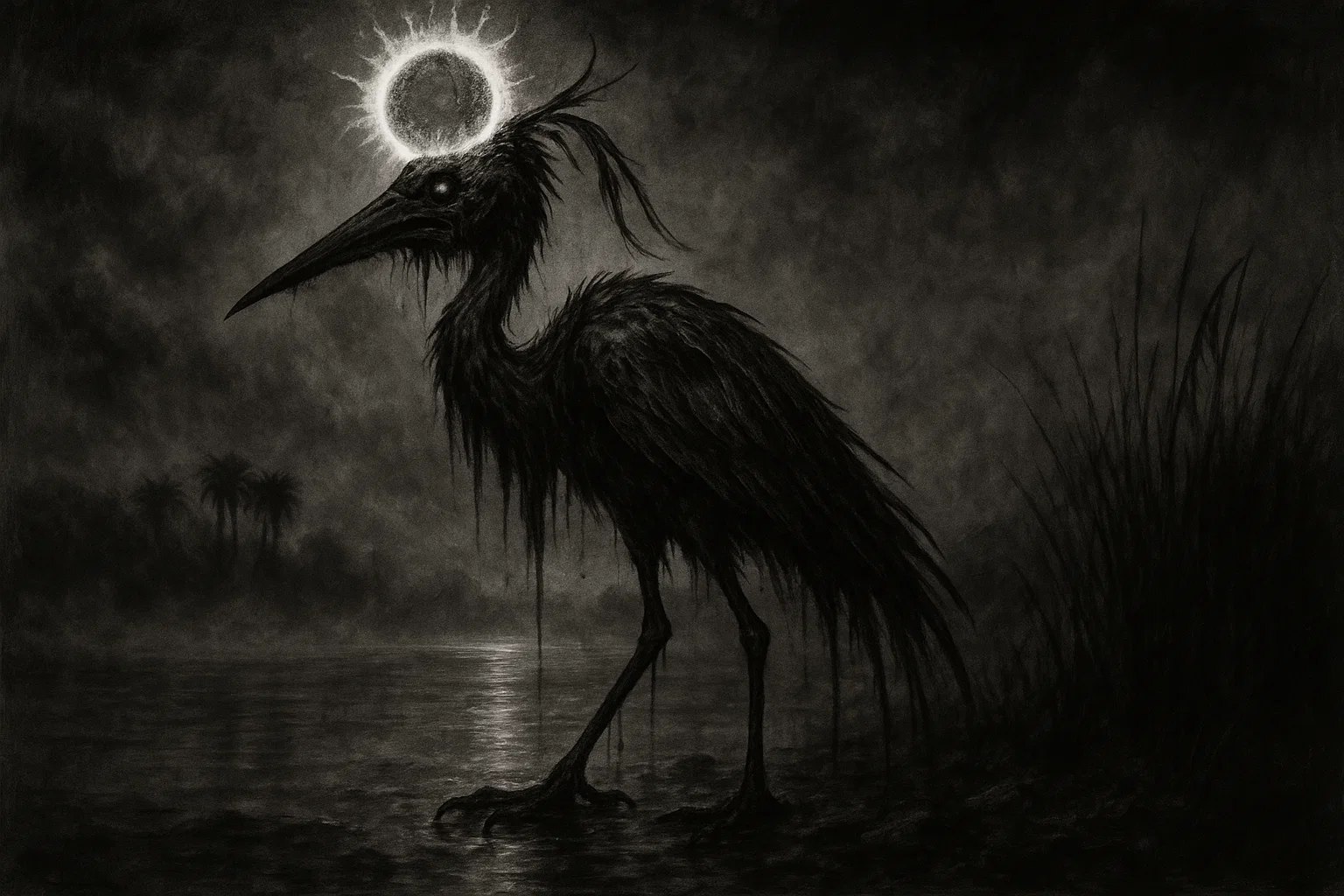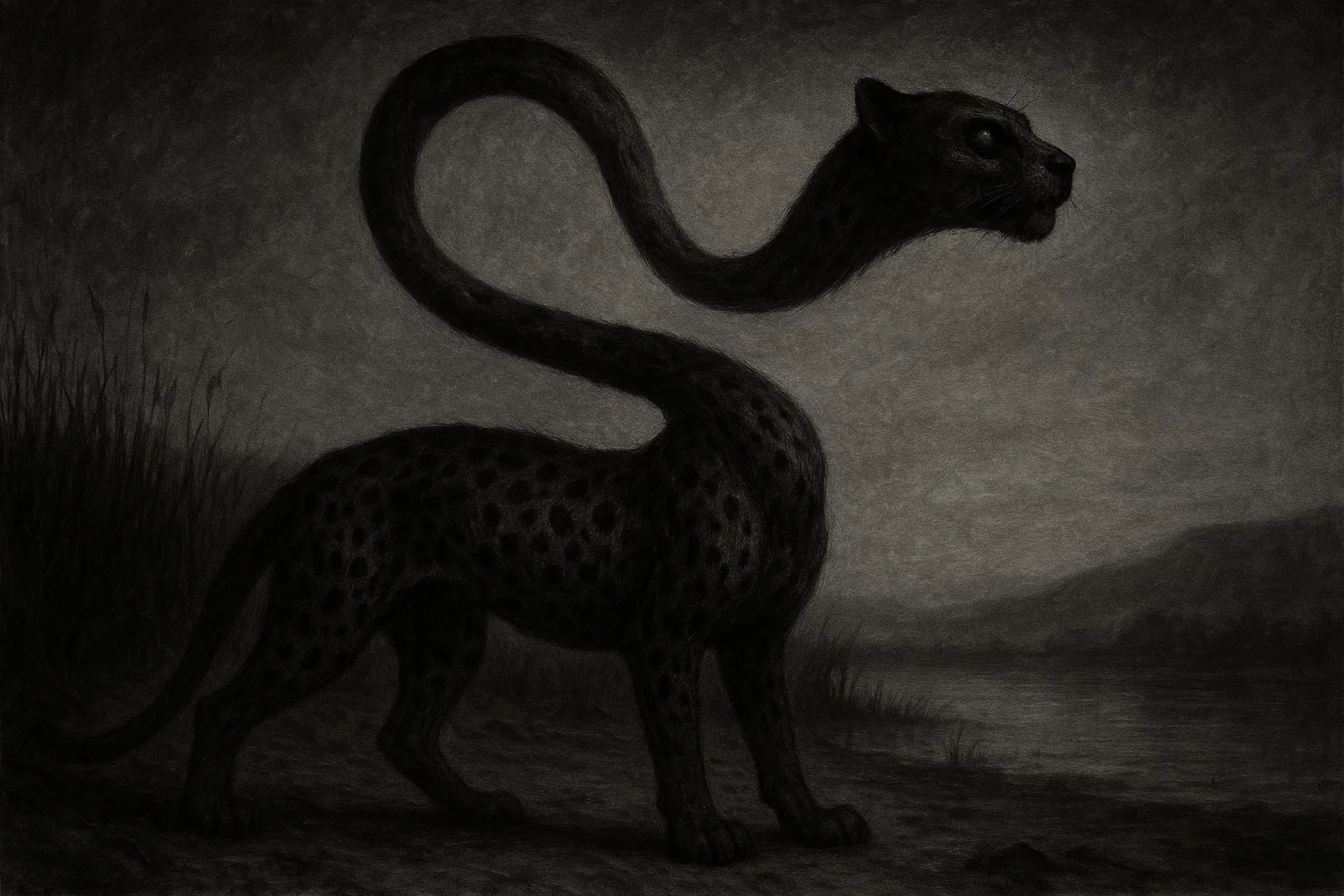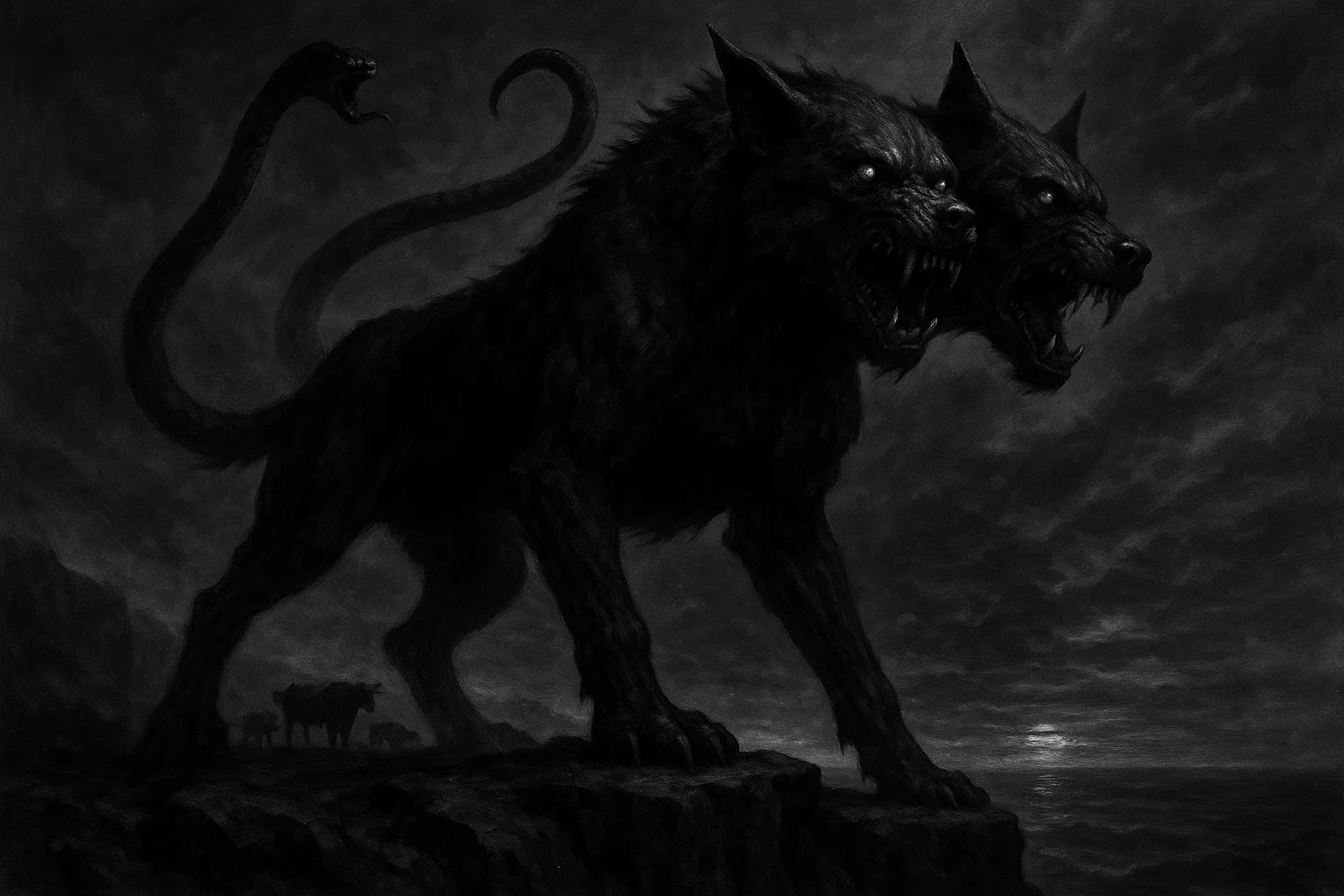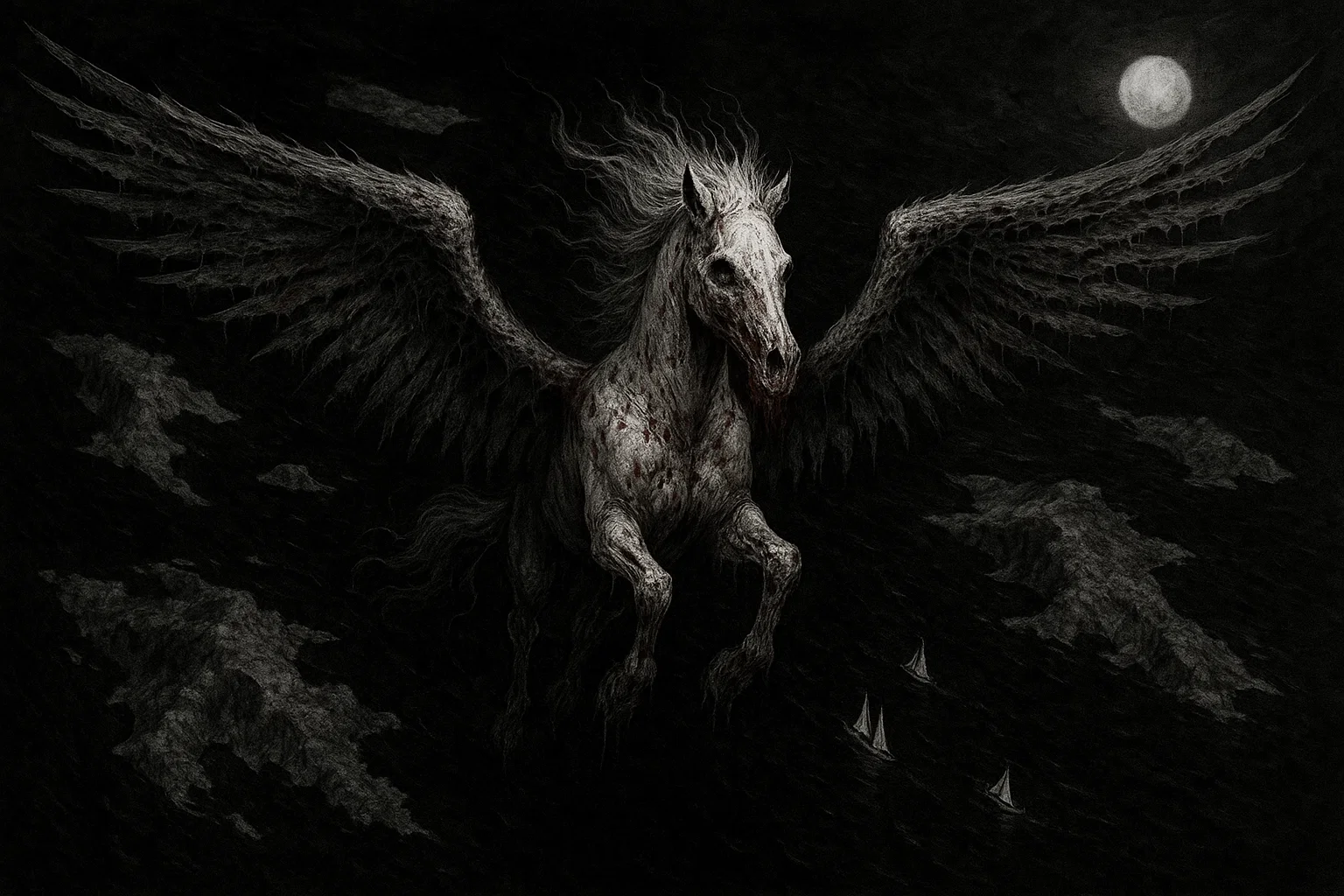Deep within the verdant heart of Brazil’s forests, where the Amazon rainforest pulses with life and ancient trees guard centuries-old secrets, whispers of a mysterious creature echo through the foliage—the Caipora.
This elusive figure, steeped in Tupi-Guarani mythology, is said to roam the wilderness, protecting its creatures and punishing those who dare to disrupt nature’s balance.
Is Caipora a benevolent guardian, a mischievous trickster, or something far more sinister?
Summary
What Is Caipora?
Caipora, derived from the Tupi words ka’a (forest) and pora (inhabitant), translates to “inhabitant of the forest.” This cryptid is a central figure in Brazilian folklore, particularly within the Tupi-Guarani cultural framework, where it is revered as a guardian of wildlife and forests. Caipora is often depicted as a protector who enforces the balance of nature, punishing hunters who overhunt or disrespect the environment.
Its role is multifaceted: in some tales, it aids respectful hunters by guiding them to game, while in others, it leads the greedy astray, causing them to lose their way in the dense forest.
The legend of Caipora is deeply tied to indigenous beliefs about the interconnectedness of humans and nature. It embodies the principle that the forest is a sacred space, deserving of respect and care. In many stories, Caipora accepts offerings such as tobacco, cachaça (a Brazilian liquor), or unflavored porridge, which hunters leave to appease it and ensure a successful hunt.
Failure to honor these rituals can result in misfortune, such as empty hunts or disorientation in the wilderness.
Caipora’s identity varies across Brazil’s diverse regions. In some areas, it is known as Caapora, Caiçara, Pai do Mato (Father of the Forest), or Mãe do Mato (Mother of the Forest). These regional names reflect local cultural nuances, with some communities viewing Caipora as a male entity and others as female.
In Bahia, for instance, it is often portrayed as a female figure, sometimes conflated with Caa-iara, a forest spirit, due to linguistic similarities. In contrast, in Rio Grande do Norte, Paraíba, and Ceará, the name Kaapora is used, emphasizing its localized significance.
The origins of Caipora are somewhat obscure. Prominent Brazilian folklorist Luís da Câmara Cascudo suggested that Caipora’s lore may not predate European colonization, as it was not documented by early Jesuit missionaries.
However, some scholars propose a connection to earlier Tupi-Guarani spirits like Kaagere or Anhanga, both described as forest dwellers who protected wildlife.
This potential link suggests that Caipora may have evolved from pre-colonial beliefs, adapting to incorporate European and African influences over time. For example, the practice of offering tobacco mirrors rituals in Afro-Brazilian traditions, indicating a syncretic development.
Caipora’s cultural impact extends beyond oral traditions. It appears in Brazilian literature, such as the works of Machado de Assis and Aluísio de Azevedo, who used “Caipora” and “Caiporism” to denote misfortune. In modern media, Caipora is featured in children’s books like Artes do Caipora em Cordel (2013) by Marco Haurélio and in TV series like Castelo Rá-Tim-Bum, where it is portrayed as a female creature with red fur and a black mask.
In the Harry Potter universe, Caipora is depicted as a protector of the magical school Castelobruxo, highlighting its global recognition as a symbol of Brazil’s mystical heritage.
What Does Caipora Look Like?
The physical appearance of Caipora is as varied as the regions that tell its tales, reflecting the rich diversity of Brazilian folklore.
At its core, Caipora is often described as a small, dark-skinned humanoid, embodying the image of an indigenous child—either a girl (caboclinha) or a boy (caboclinho). This form is typically depicted as naked or clad in minimal clothing, such as a tanga or loincloth, with long, flowing hair that is frequently red, a trait possibly borrowed from the similar cryptid Curupira.
You May Also Like: Maple Hill Cemetery Haunting: Ghost Child Sightings and Eerie Legends
However, Caipora’s appearance can shift dramatically depending on the storyteller. In some accounts, it is a dwarf-like creature, agile and mischievous, while in others, it transforms into a large, hairy humanoid or even a beast-like entity.
Notable descriptions include:
- Ceará: A small figure with bristly hair on its head, glowing red eyes like embers, and sharp teeth resembling those of a howler monkey.
- Bahia: A “small cabocla, almost black,” an old black man, or a hairy little boy, sometimes described as “half invisible, black as the devil.
- Rio Grande do Sul: A “hairy giant man,” as noted by João Simões Lopes Neto in 1913, or a large man covered in black hair, according to José Vieira Couto de Magalhães.
- Amazon Rainforest: A dark, robust, and hairy figure, often seen riding a peccary and wielding a stick or whip made of spiny vines (japecanga or Smilax species).
Unique physical traits further distinguish Caipora. It is frequently said to ride a peccary (white-lipped or collared), though some tales mention other mounts like tapirs, porcupines, deer, or rabbits. Caipora may carry a whip or stick, sometimes crafted from forest plants, which it uses to control animals or punish transgressors.
In certain regions, it is described as having a round foot, akin to the cryptid Pé de garrafa, or even one eye or double right feet, traits that align it with other Brazilian mythological figures like Saci or Curupira.
The variability in Caipora’s appearance may be linked to its forest environment. Its hairy, beast-like forms and association with peccaries reflect the untamed wilderness of the Amazon and other Brazilian forests, where dense vegetation and diverse fauna create a backdrop for such a creature.
The glowing red eyes could be inspired by natural phenomena, such as the reflective eyes of nocturnal animals, enhancing its otherworldly aura.
However, its humanoid features, such as the child-like form or the ability to smoke a cigar or pipe, seem out of place in the wild, suggesting a blend of human and supernatural elements that underscores its role as a bridge between the human and natural worlds.
This adaptability in appearance allows Caipora to resonate with different communities, each projecting their cultural and environmental context onto the creature.
For instance, the hairy giant form in southern Brazil may reflect the rugged terrain of Rio Grande do Sul’s hills, while the small, agile figure in the Amazon aligns with the dense, labyrinthine rainforest.
Habitat
Caipora is intrinsically tied to Brazil’s forested landscapes, with its primary domain being the Amazon rainforest, a vast ecosystem spanning millions of square kilometers and home to unparalleled biodiversity.
However, its legend extends to other regions, including the hilly forests of Rio Grande do Sul, the open fields and woodlands of Santa Catarina, and the mountainous terrains of Minas Gerais. According to Tupi-Guarani lore, Caipora resides in hidden places, such as the hollows of rotting trees, which serve as its lair or resting place.
The Amazon rainforest, with its dense canopy, towering trees, and rich fauna, is the quintessential habitat for Caipora. This region supports species like peccaries, tapirs, deer, and porcupines, which are often mentioned as Caipora’s companions or mounts.
The rainforest’s remoteness and limited human access enhance the mystique of Caipora, as it is said to thrive in areas untouched by civilization. The Amazon’s environmental challenges, including deforestation and poaching, mirror Caipora’s role as a protector, with its legend serving as a cultural response to these threats.
You May Also Like: Kali Oka and Oak Grove Plantations Haunting: Ghost Stories from Saraland, Alabama
For example, the region has lost approximately 20% of its forest cover since the 1970s due to logging and agriculture, making Caipora’s guardianship a poignant symbol of resistance.
In southern Brazil, the habitats of Rio Grande do Sul and Santa Catarina feature a mix of forests, grasslands, and hills, known as the Pampa and Atlantic Forest biomes.
These areas, while less dense than the Amazon, still support diverse wildlife, including peccaries and deer, aligning with Caipora’s association with forest animals. Minas Gerais, with its rugged mountains and cerrado (savanna) landscapes, provides another backdrop for Caipora’s tales, particularly in rural communities where folklore remains strong.
These regions are not only ecologically significant but also steeped in paranormal and mythological lore. The Amazon is home to other cryptids like Mapinguari, a one-eyed, hairy giant believed to protect the forest, and Boitatá, a fiery serpent that guards fields.
In southern Brazil, Curupira, with its backward feet, shares Caipora’s role as a forest protector, while Saci, a one-legged trickster, adds to the region’s rich tapestry of folklore. These overlapping legends suggest that Caipora’s habitats are cultural hotspots for stories of supernatural beings, possibly reflecting indigenous and rural communities’ deep connection to the land.
The history of these areas also includes unexplained phenomena that may have fueled Caipora’s legend. In the Amazon, indigenous tribes have reported mysterious animal revivals, where killed game inexplicably returns to life, attributed to Caipora’s touch.
In Bahia’s Serra da Jiboia, a forested mountain range, a 2023 study found that 57 local residents, primarily farmers over 50, strongly believed in Caipora as a spiritual entity linked to conservation, citing strange noises and animal behaviors as evidence of its presence.
Similarly, in Minas Gerais, tales of hunters lost in the forest or encountering shadowy figures have persisted for generations, reinforcing Caipora’s reputation as a trickster.
Caipora Sightings
The Caipora is primarily known through folklore rather than modern, verifiable sightings, with its “encounters” embedded in oral traditions that serve as cautionary tales. These stories, passed down through generations, emphasize respect for nature and the consequences of violating its sanctity.
| Date | Location | Witness | Description of Event |
|---|---|---|---|
| Unknown (Folklore) | Bahia, Brazil | Lost Hunter | An old black man offers tobacco and guides a lost hunter, then vanishes. |
| Unknown (Folklore) | Guarabira, Paraíba | Hunter | A hunter shoots a dove on a Friday, which revives and flies away. |
| Unknown (Folklore) | Ceará, Brazil | Traveler | A bristly-haired creature with glowing red eyes leads a traveler astray in the forest. |
| Unknown (Folklore) | Amazon Rainforest | Indigenous Tribes | Hunters report animals reviving after being killed, attributed to Caipora’s touch. |
| Unknown (Folklore) | Rio Grande do Sul | Local Villagers | A hairy giant riding a peccary scatters game and disorients hunters. |
Bahia: The Old Black Man
In a widely told tale from Bahia, a hunter, lost in the dense forests of the South Recôncavo region, encounters an old black man who offers him tobacco. Grateful, the hunter accepts and follows the man’s guidance to find his way home. Upon reaching safety, he realizes the man has vanished without a trace.
You May Also Like: The SS Ourang Medan’s Last Call | Horror Story
Locals attribute this to Caipora, who is believed to test hunters’ respect for the forest. This story highlights Caipora’s dual role as a helper and a mysterious figure, with the tobacco offering symbolizing a pact with nature.
Guarabira, Paraíba: The Reviving Dove
In Guarabira, Paraíba, a hunter ventures into the forest on a Friday, a day considered sacred in some traditions due to Caipora’s heightened activity. Finding no game, he shoots a dove, only to watch it revive and fly away unharmed. Stunned, the hunter returns empty-handed, and locals attribute the event to Caipora’s protective powers.
This tale underscores the belief that Caipora can resurrect animals, particularly on days like Fridays, Sundays, or religious holidays when hunting is frowned upon.
Ceará: The Glowing-Eyed Trickster
In Ceará, a traveler recounts being led astray by a small, bristly-haired creature with glowing red eyes that appeared in the forest at dusk. The creature, described as agile and mischievous, guided the traveler in circles before vanishing, leaving him disoriented.
This encounter, attributed to Caipora, reinforces its reputation as a trickster who punishes those who disrespect the forest’s sanctity, using its supernatural abilities to confuse intruders.
Amazon Rainforest: The Resurrected Game
Indigenous tribes in the Amazon, particularly the Tupi and Munduruku, share stories of hunters whose kills mysteriously revive. In one account, a hunter’s bullets fail to kill game unless blessed, and animals touched by Caipora’s peccary or its Smilax branch spring back to life.
Rio Grande do Sul: The Hairy Giant
In Rio Grande do Sul, villagers report sightings of a hairy giant riding a peccary, wielding a stick and causing fear among hunters.
In one story, a group of hunters, after killing a pregnant deer, encounters this figure, which scatters their game and leaves them lost for days. The villagers, believing it to be Caipora, leave offerings of cachaça and tobacco to appease it.
Evidence and Investigations
No physical evidence, such as footprints, photographs, or videos, supports the existence of Caipora as a physical creature. Unlike cryptids like Bigfoot or the Loch Ness Monster, which have spurred modern investigations, Caipora’s “sightings” are confined to folklore, with no documented contemporary reports in newspapers, magazines, or official records.
This absence of tangible evidence aligns with the view of folklorists like Luís da Câmara Cascudo, who noted that Caipora’s lore lacks attestation from early Jesuit missionaries, suggesting a post-colonial origin.
Academic studies, such as the 2023 ethnobiology research in Bahia’s Serra da Jiboia, provide indirect evidence of Caipora’s cultural significance.
The study, involving 57 interviews with local farmers, found a strong belief in Caipora as a spiritual entity linked to forest conservation. Participants reported hearing strange noises or observing unusual animal behaviors, which they attributed to Caipora, though no specific sightings were documented.
You May Also Like: Lizard Man of Lee County Cryptid: Sightings, Tracks, and Legends
These findings suggest that Caipora’s legend influences environmental practices, encouraging sustainable resource use, but do not confirm its physical existence.
Cryptozoological investigations into Caipora are virtually nonexistent, as its mythological status overshadows any serious scientific inquiry. Unlike the Mapinguari, which has attracted speculation about surviving ground sloths, Caipora’s varied descriptions and lack of consistent eyewitness accounts make it less viable for cryptozoological study.
Scientific Perspective
From a scientific standpoint, Caipora is considered a mythological figure rather than a cryptid with potential biological basis. The lack of physical evidence, coupled with the extreme variability in its descriptions—from a small child to a hairy giant—undermines claims of its existence as a real creature.
Possible Explanations
Several theories attempt to explain the Caipora legend, each offering insights into its cultural and environmental origins:
1) Misidentification of Animals
Some accounts of Caipora may stem from misidentifications of native animals like peccaries or tapirs, which are common in Caipora’s habitats. A peccary, with its pig-like appearance, could be mistaken for a creature being ridden by a humanoid figure, especially in low-light conditions.
The glowing red eyes described in some tales might result from the reflective retinas of nocturnal animals, a phenomenon known as eyeshine. However, this theory fails to account for Caipora’s humanoid traits, such as its ability to speak or use tools, or its supernatural abilities, like resurrecting animals.
2) Cultural Symbolism
Caipora likely serves as a cultural symbol of indigenous and rural communities’ reverence for nature. Its role as a forest guardian reflects real-world concerns about deforestation, poaching, and unsustainable hunting, particularly in the Amazon, where over 800,000 square kilometers of forest have been lost since the 1980s.
By personifying the forest’s wrath, Caipora reinforces the need for ecological balance, a message that resonates in regions facing environmental degradation.
You May Also Like: The Truth About the Alabama Metal Man: 1973 Cryptid or Hoax?
This explanation aligns with the legend’s persistence in areas like Bahia, where belief in Caipora correlates with conservation efforts, but it does not address whether the creature was inspired by a real entity.
3) Psychological Deterrent
The Caipora legend may function as a psychological deterrent, discouraging overhunting and forest exploitation. Stories of hunters lost in the wilderness or facing supernatural punishment create a fear-based incentive to respect nature.
This theory is supported by the specific taboos associated with Caipora, such as avoiding hunting on Fridays or targeting pregnant animals. While effective in explaining the legend’s cultural role, it does not account for the detailed physical descriptions or regional variations in Caipora’s appearance.
4) Historical Syncretism
Some scholars suggest that Caipora may have evolved from earlier Tupi-Guarani spirits like Kaagere or Anhanga, documented in the 16th century by French explorer André Thevet.
These spirits, described as forest dwellers who warded off intruders, share similarities with Caipora, such as their protective roles and fear of light.
Over time, European and African influences, such as tobacco offerings from Afro-Brazilian rituals, may have shaped Caipora into its current form. This theory provides a historical context for the legend’s development but lacks definitive evidence linking Caipora to these earlier spirits.
Comparison With Other Similar Cryptids
Caipora shares thematic and environmental similarities with numerous cryptids, particularly those tied to forest protection:
| Cryptid | Description | Habitat | Physical Traits |
|---|---|---|---|
| Curupira | Small, red-haired humanoid with backward feet, protects the forest | Brazilian forests | Red hair, backward feet |
| Mapinguari | Large, ape-like creature with a mouth in its stomach, foul-smelling | Amazon rainforest | Hairy, bipedal, single eye in some accounts |
| Yacumama | Giant serpent or anaconda, guards rivers and lakes | Amazon rivers and lakes | Enormous snake, often invisible |
| Boitatá | Giant fiery serpent with bull horns, blinds those who look at it | Brazilian fields, forests | Fiery body, glowing eyes |
| Saci | One-legged trickster, smokes a pipe, causes mischief | Brazilian forests, rural areas | Black, one-legged, red cap |
| Anhanga | Forest spirit, causes illness and fear among hunters | Brazilian forests | Dark-skinned, shadowy figure |
| Leshy | Shape-shifting forest spirit, protects wildlife | Russian forests | Varies: old man, animal, or tree-like |
| Sasquatch | Large, hairy, bipedal humanoid | North American forests | Tall, covered in hair, large footprints |
| Chupacabra | Small, reptilian creature that attacks livestock | Latin America, U.S. Southwest | Spiky back, glowing eyes |
| Yeti | Large, ape-like creature, similar to Sasquatch | Himalayan mountains | Hairy, bipedal, large footprints |
| Mothman | Large, winged humanoid with glowing red eyes | West Virginia, U.S. | Wingspan, red eyes |
| Naga | Serpent-like deity or protector | Southeast Asia, India | Serpentine body, sometimes human upper half |
| Banshee | Wailing female spirit, associated with death | Ireland, Scotland | Pale, long hair, mournful cry |
Curupira and Caipora are particularly close, often conflated in some regions, though Curupira’s backward feet distinguish it. Mapinguari, with its modern sightings, contrasts with Caipora’s folklore-based presence, while Boitatá and Yacumama extend the theme of nature’s guardianship to different ecosystems.
Globally, figures like the Leshy and Naga echo Caipora’s role as a forest or resource protector, highlighting universal human concerns about nature’s preservation.
Is Caipora Real?
The question of Caipora’s reality hinges on perspective. Scientifically, no evidence supports its existence as a physical creature. The absence of fossils, footprints, or credible modern sightings, combined with its varied descriptions, positions Caipora firmly within the realm of mythology.
Folklorists and anthropologists, such as Luís da Câmara Cascudo, argue that Caipora is a cultural construct, possibly a post-colonial synthesis of indigenous, European, and African beliefs, rather than a remnant of a real species.
Culturally, however, Caipora is profoundly real, embodying the values and fears of communities that rely on the forest. Its stories, like those of hunters lost or animals revived, serve as moral lessons, promoting respect for nature in regions plagued by environmental challenges.
The 2023 Serra da Jiboia study illustrates this, showing how belief in Caipora fosters conservation among Bahia’s farmers, even without physical proof.
Caipora’s origins may lie in earlier Tupi-Guarani spirits like Kaagere or Anhanga, suggesting a deep-rooted indigenous foundation. Its evolution, incorporating elements like tobacco offerings, reflects Brazil’s cultural melting pot.
Whether viewed as a myth or a symbol, Caipora’s legacy endures, inspiring literature, art, and environmental awareness. In a world grappling with deforestation and biodiversity loss, Caipora’s message—to honor and protect the forest—remains as relevant as ever.

